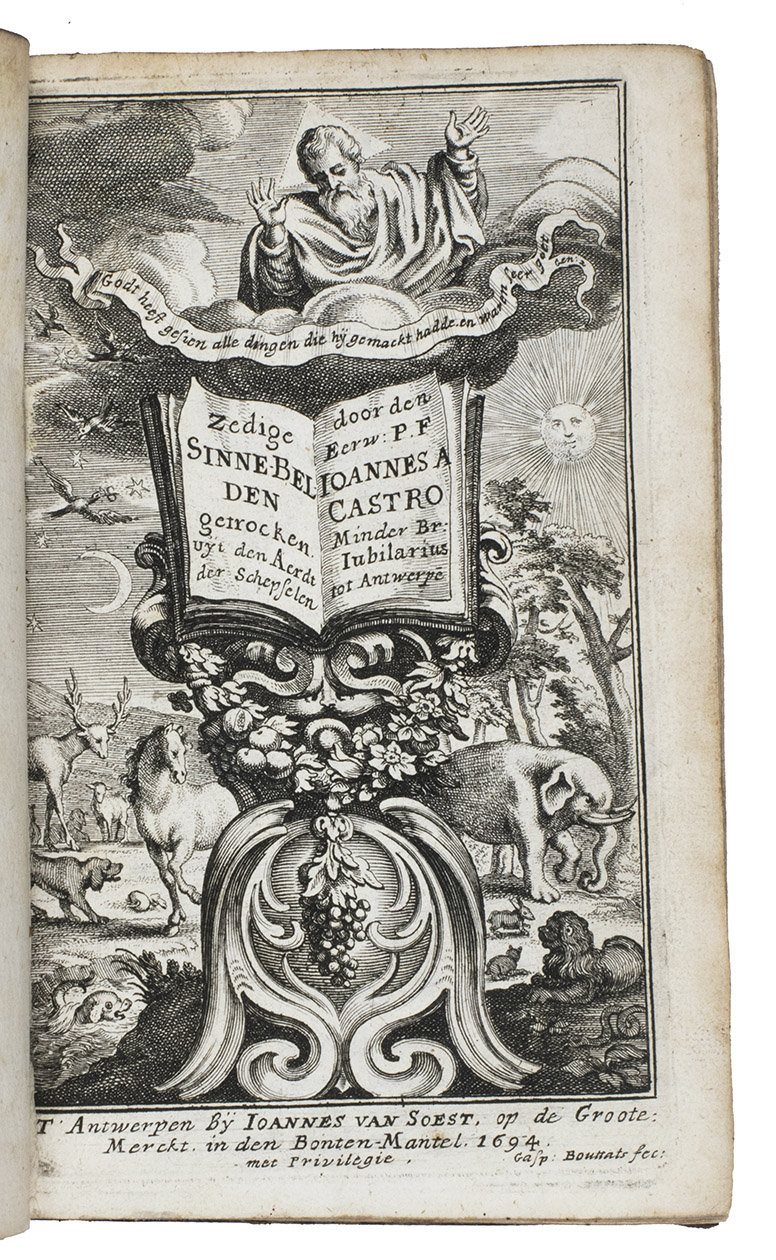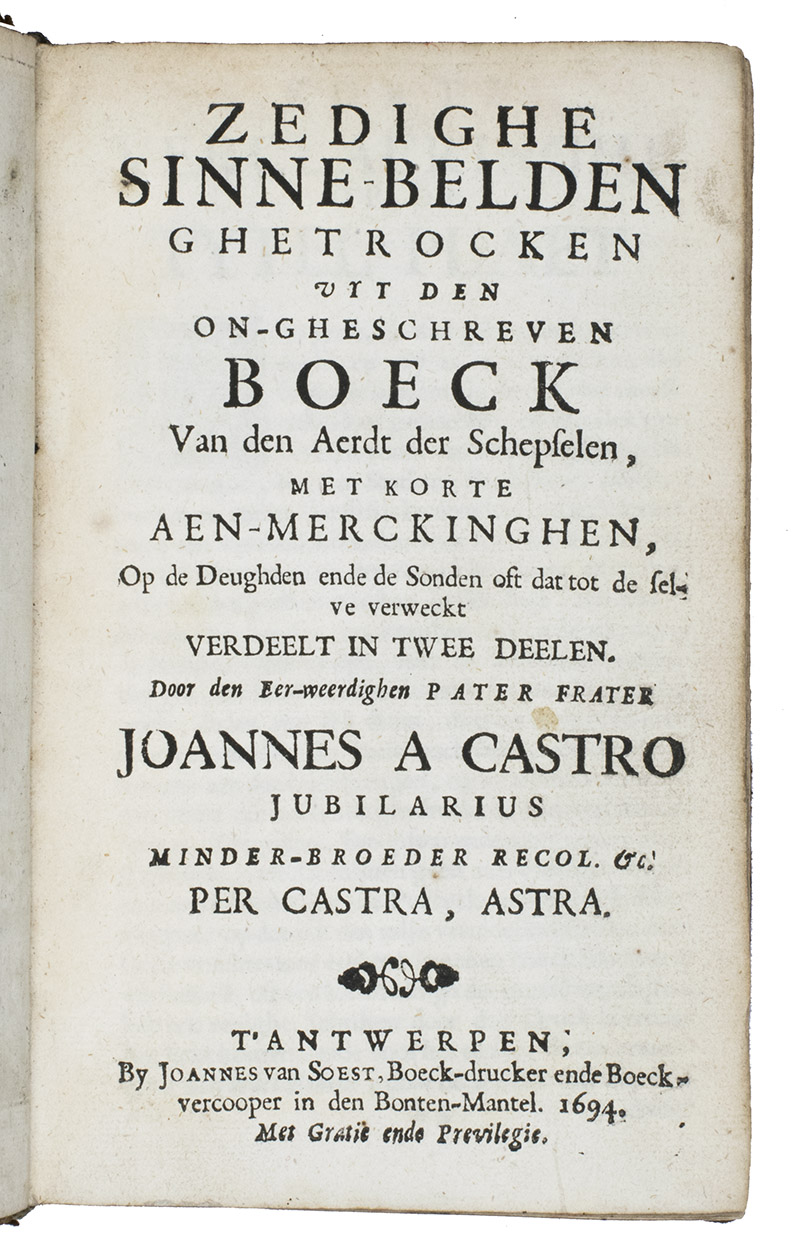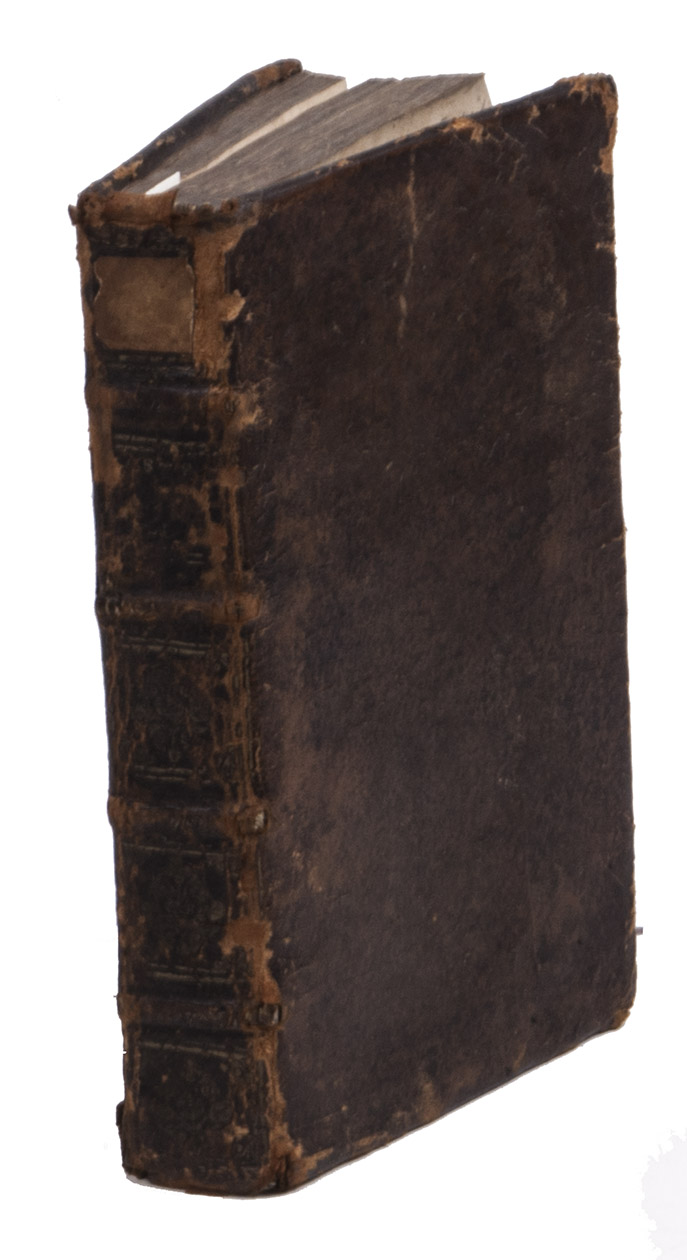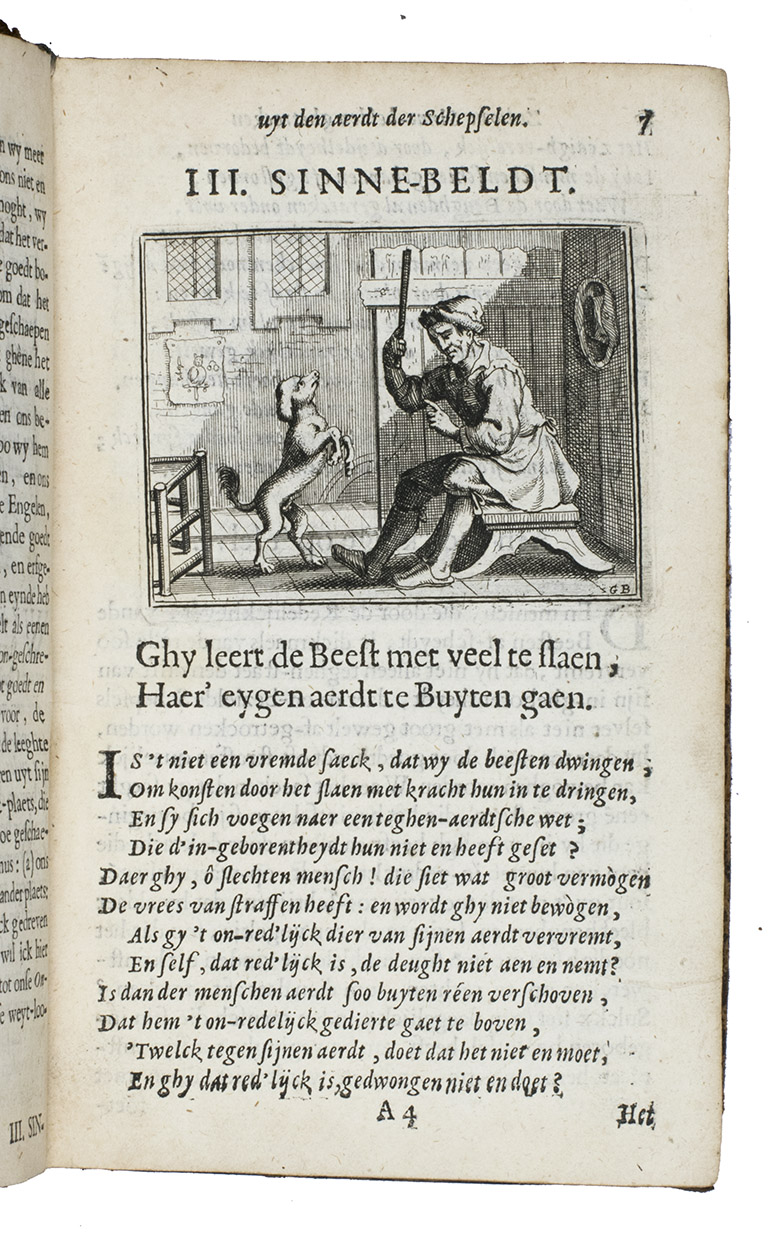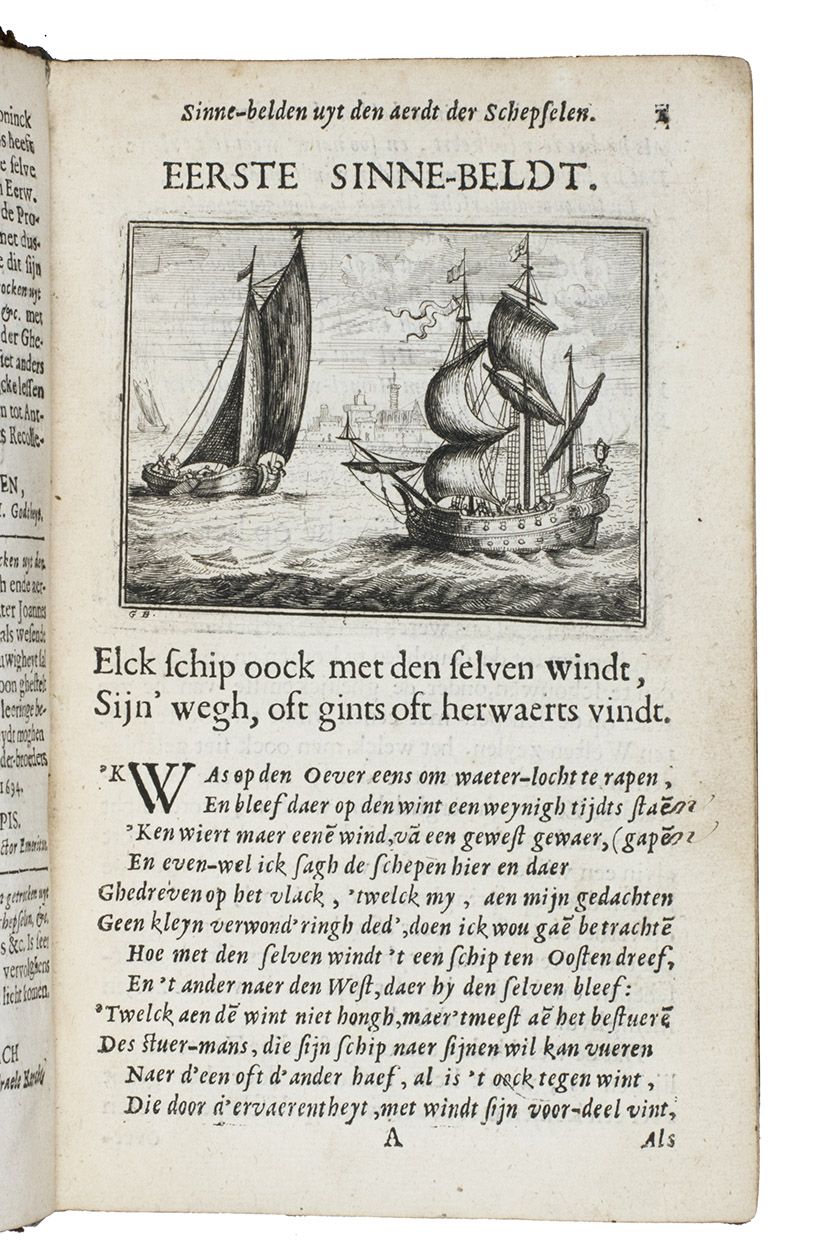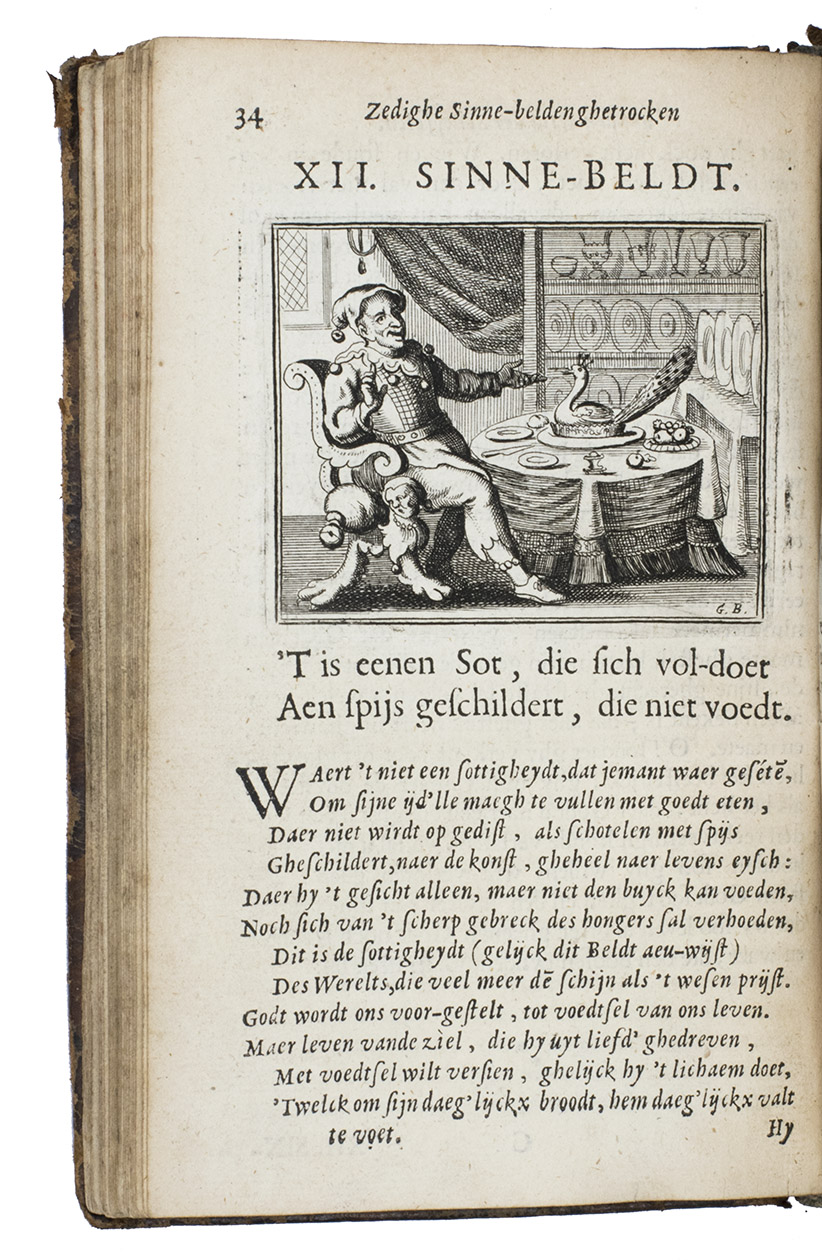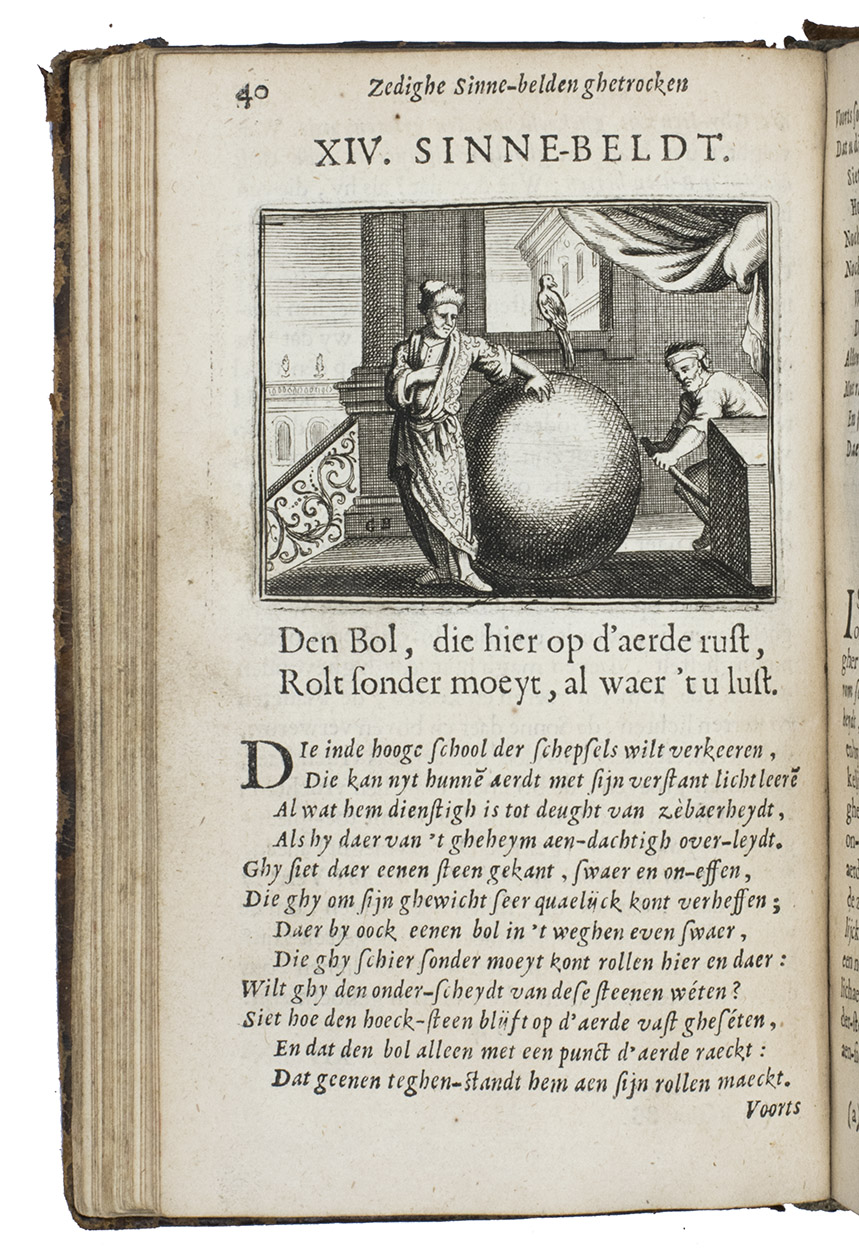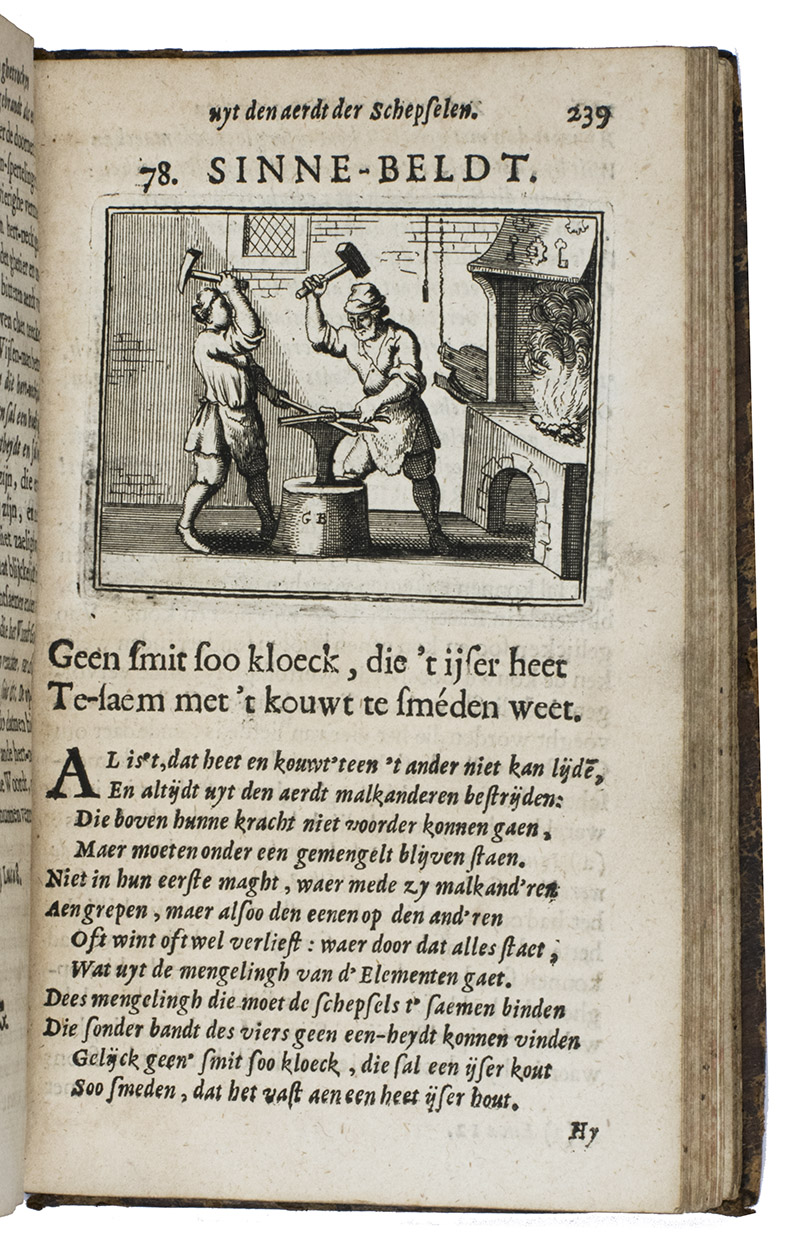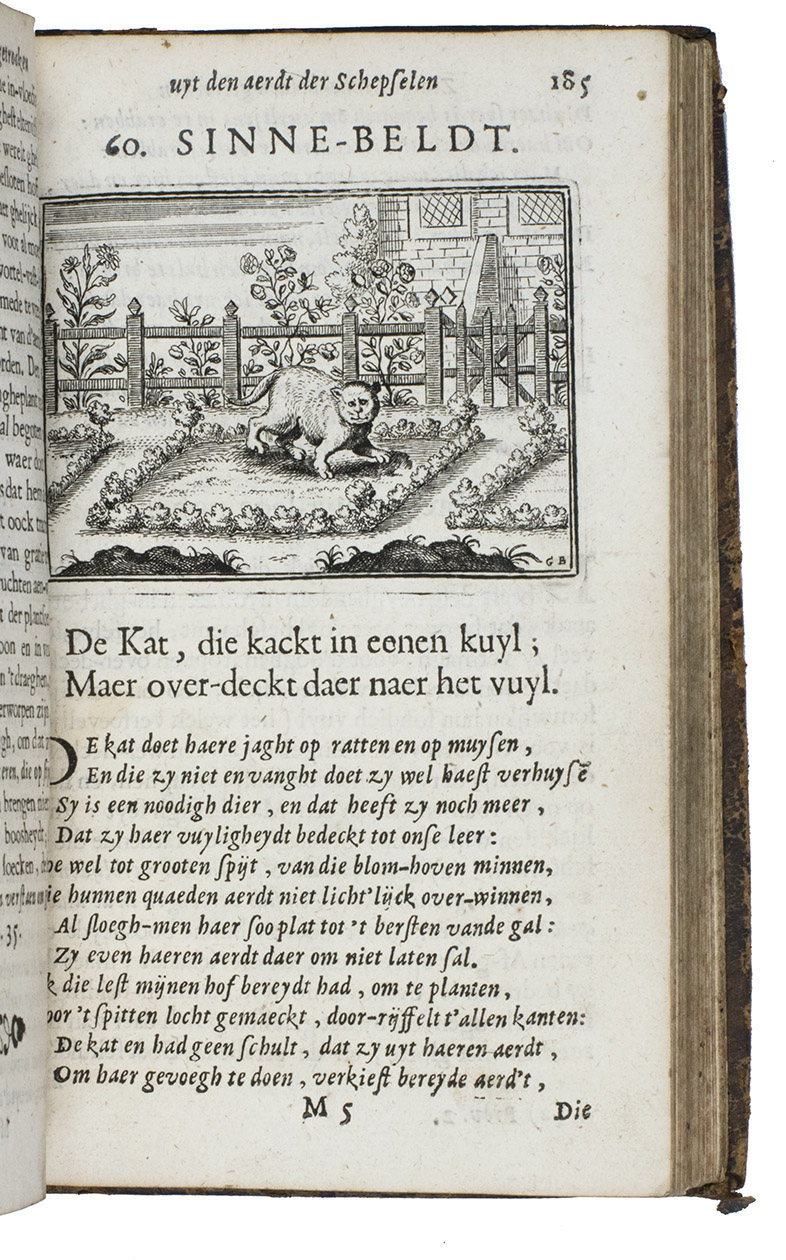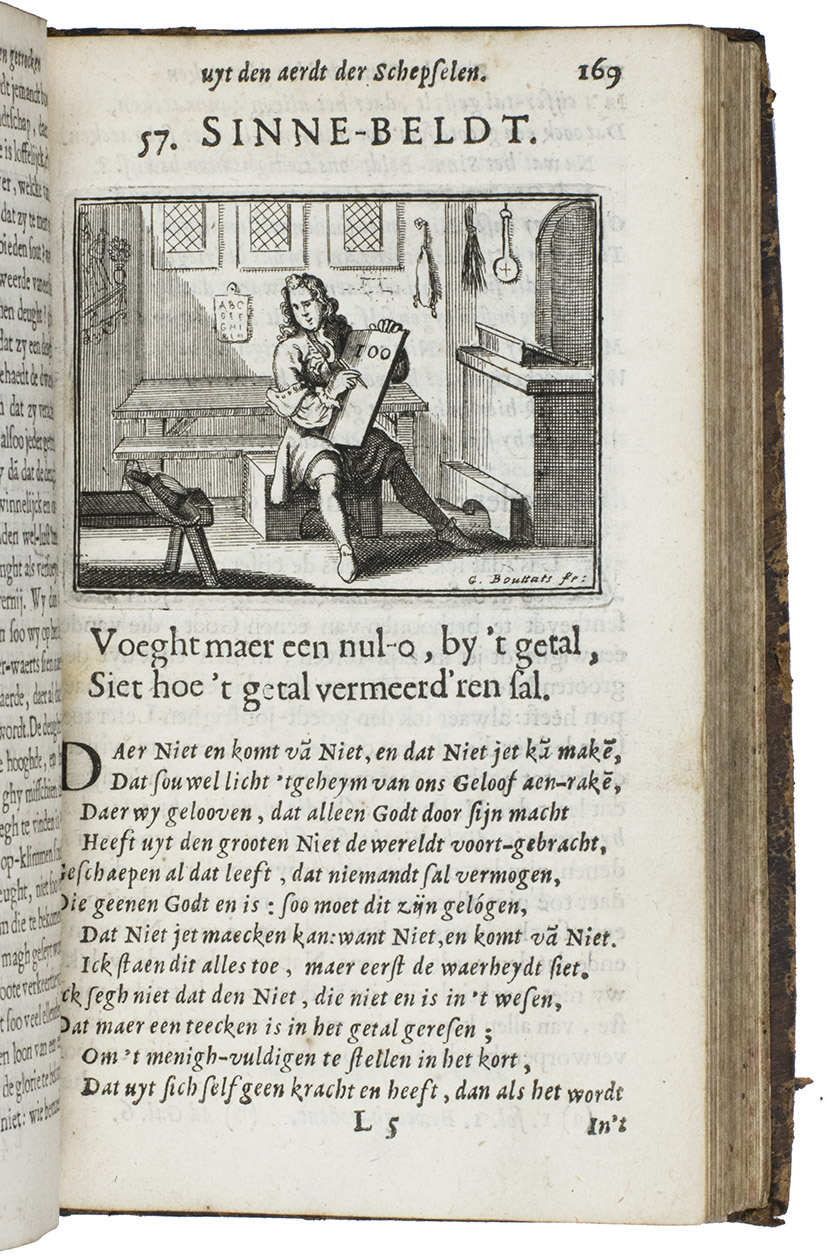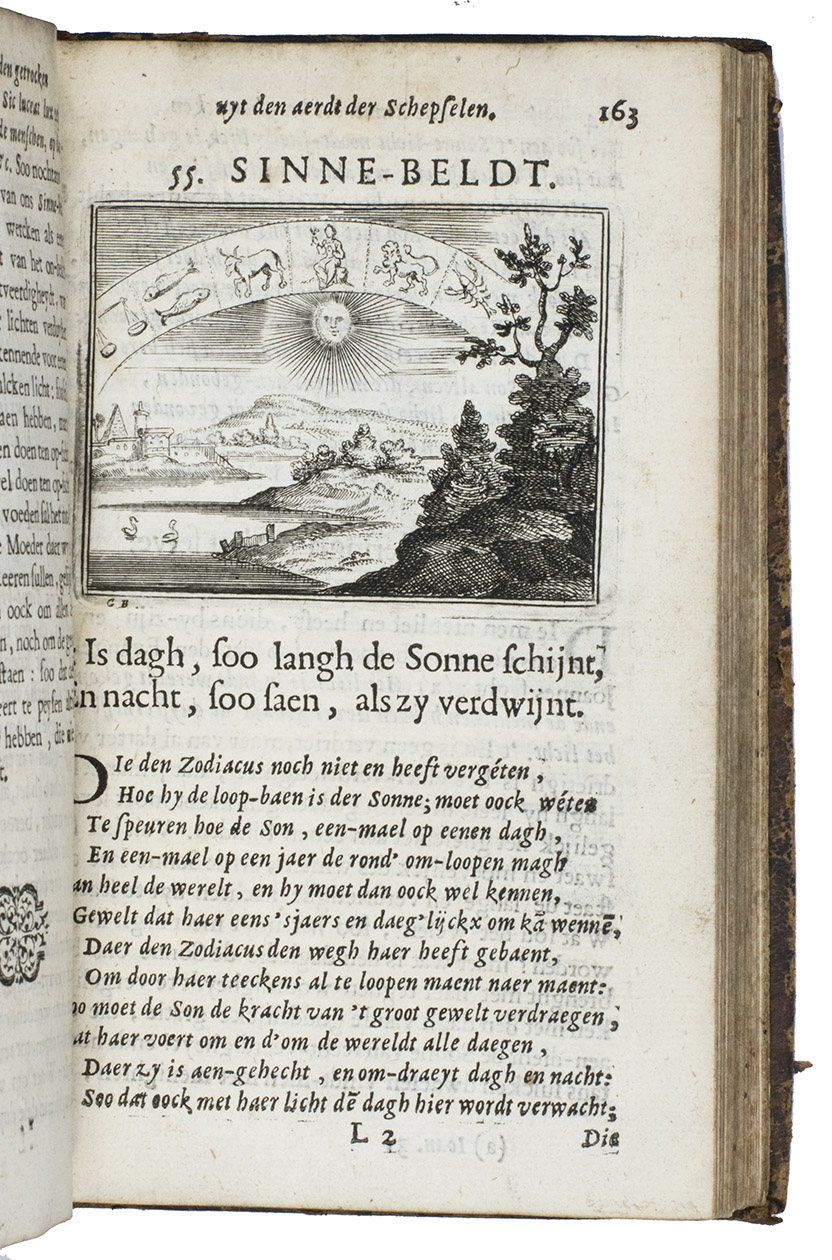CASTRO, Joannes à (Jean van der BORCHT).
Zedighe sinne-belden ghetrocken uit den on-gheschreven boeck van den aerdt der schepselen, met korte aen-merckinghen, op de deughden ende de sonden oft dat tot de selve verweckt, verdeelt in twee deelen.
Antwerp, Joannes van Soest, 1694. 8vo. With richly engraved allegorical frontispiece and 100 finely engraved half-page emblems, all by Gaspar Bouttats. Further with 3 woodcut tailpieces, three woodcur decorated initials (1 series) and an occasional decoration built up from typographic ornaments Contemporary mottled tanned sheepskin. [24], 316, [10], [2 blank] pp.
€ 1,500
First and only edition of an educational emblem book by Johannes à Castro, or Jean van der Borcht, poet and Franciscan at Antwerp. According to the preface our author was 73 years old when he wrote the present work. He also states that he based all his emblems on nature as the teacher of men, and he claimed that even illiterate people could enjoy the book. But he clearly meant "nature" to include the human race, since many emblems are about men (and women) as well. Thus, several emblems have a merchant as the main figure, like the one with the motto: "Die ver'rijst met sijn wissel-brief, vindt buyten 'slands oock sijn gerief" (Who travels with his letter of exchange, will also find his comfort abroad), and another emblem warns against moths in the closet. He probably knew the emblems of Jacob Cats well. The printer, Joannes van Soest, set the two-page dedication to God the Father, the Son and the Holy Ghost, in about eight different types (roman, italic and textura), changing from line to line. All the emblems have a motto in the form of a distich and are accompanied by a long poem set in italic and an extensive prose explication set in roman type, with notes at the end giving the references to the scriptures. In addition to their religious and moral aspects, and their views of animals (most often in their contacts with people), the emblems show a wide variety of objects, activities and professions in scenes of daily life in 1694, including bloodletting and blacksmithing. They also show the rising interest in exotic lands, for example with two south Asian men attempting to capture an elephant, which seems to be capturing one of them. Although the text is nominally divided into two parts (emblems 1-57 in the first and 58-100 in the second), the second begins with only a drop-title on L7r, so the book could not reasonably be bound in two volumes. Gaspar Bouttats (1625-1695), a famous Antwerp engraver, provided the frontispiece (showing God the father looking down onto a landscape with a wide variety of animals, including an elephant) and all the emblems. An index of all mottoes is given at the end.
The binding is darkened and somewhat worn, especially the backstrip and hinges, but internally in good condition, with even the final blank leaf preserved. BCNI 15301; Landwehr, Emblem & fable books, 103 (4 copies); De Vries, Emblemata 239; Praz, p. 299; STCV 3135689 (5 copies).
Related Subjects:
